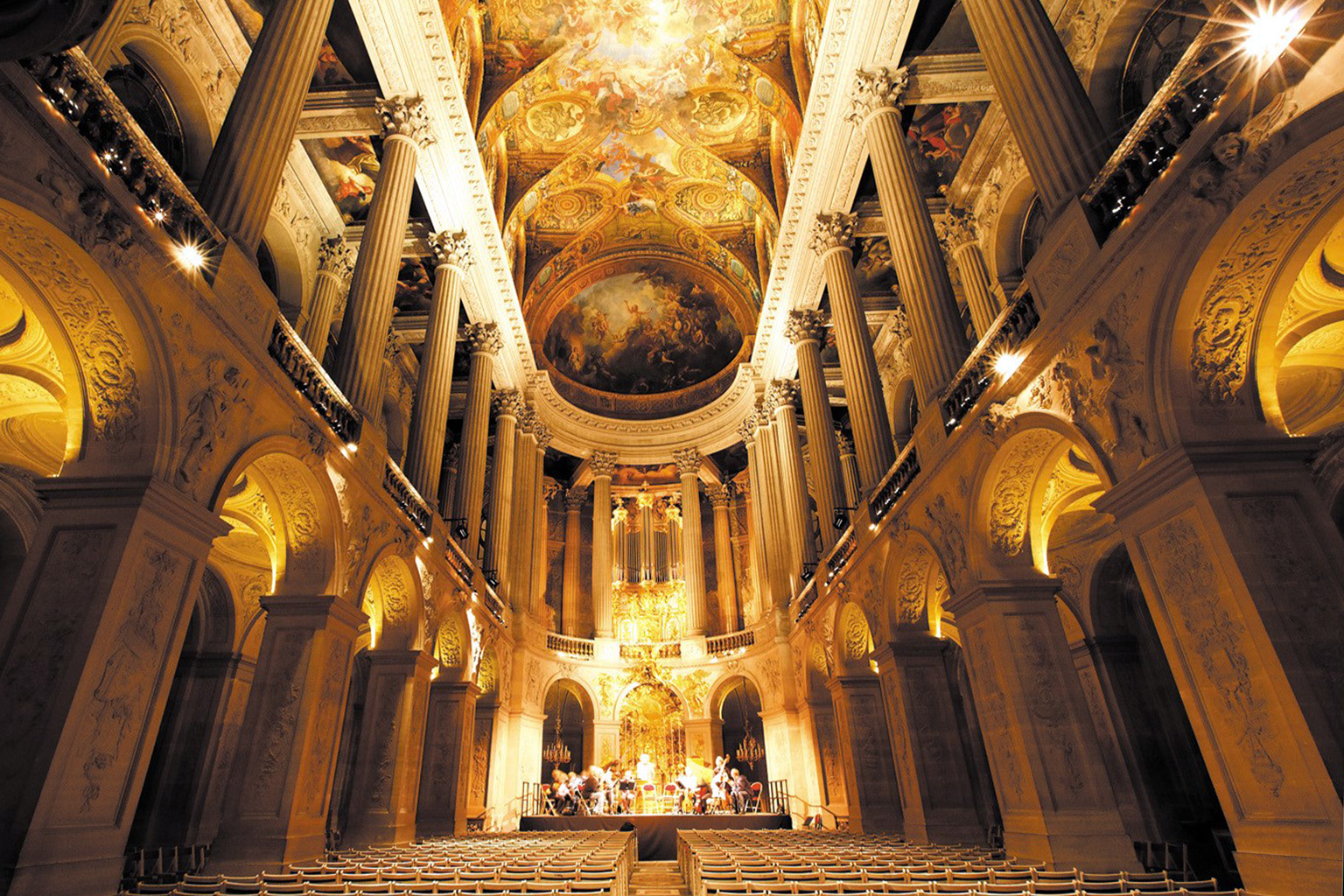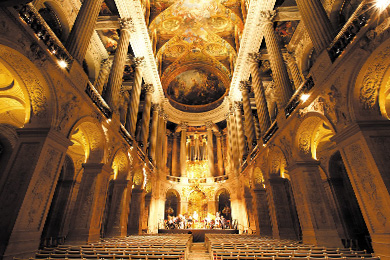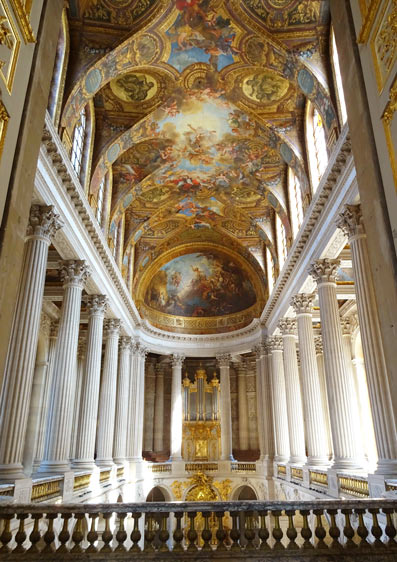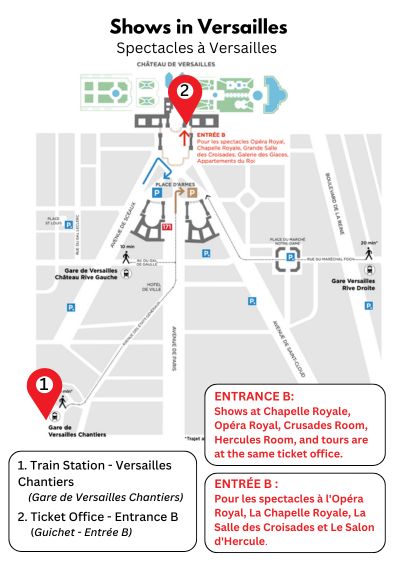Charpentier's Leçons des Ténèbres

Location
1 Place Léon Gambetta, 78000 Versailles
Capacity 800 seats
Duration
1h 40m
With intermission
Details
Classical concert
For all audiences
In Latin
Highlights: Charpentier's Leçons des Ténèbres
Story: Charpentier's Leçons des Ténèbres
Premium experience & option
Reviews
Royal Chapel of Versailles
History and Fun Facts about the Royal Chapel of Versailles
If buildings could talk, what would they say? Certainly, the Royal Chapel of Versailles could tell a tale or two! After all, it was the venue for the marriage between the last king and queen of France: Louis XVI and Marie Antoinette. The chapel’s construction was completed in 1710 during the reign of Louis XVI’s great-great-great-grandfather, Louis XIV, also known as the Sun King. It was the fifth and final chapel to be built at the Palace of Versailles, and it was consecrated to Saint Louis, the patron saint of the king, as well as one of the king’s ancestors.
The architecture itself references this lineage, through several similarities with the Sainte-Chapelle in Paris, which Saint Louis had founded, as well as in the emblazoned double-L motif on the altar symbolizing the saint, and the Sun King together. The vaulted ceiling of the Royal Chapel of Versailles was constructed by Hardouin-Mansart, without the use of transvers ribs, in order to create a vast, uninterrupted depiction of the Holy Trinity, above the heads of the congregation. For decades, this painting would look down on the French Royal Family as they took their daily mass, an event which became renowned across Europe for its use of music, played on a huge organ designed by Cliquot.
The Royal Chapel of Versailles also incorporates classical-inspired designs in its impressive colonnades, which we have come to associate with the Neoclassical boom of the 18th century, however, the chapel’s construction was completed long before the movement really came to prominence, showing that its architects were truly ahead of their time. Since the chapel’s deconsecration in the 19th century, it has become a go-to venue for classical concerts, and so it should be, having been the epicenter of European music in centuries gone by. What better place to experience the history of music!
Fast facts
Capacity: 800
Handicap Accessible: Yes
Air conditioning: No
Heating: Yes
Coat Check: Yes (free service)
FAQ
How do I get to the Royal Chapel of Versailles?
The Royal Opera of Versailles is accessible by: Metro lines: You can take the RER C to Versailles Château Rive Gauche, lines N and U of the Transilien to Versailles Chantiers, and line L to Versailles Rive Droite. Bus lines: You can take bus line 171 The Royal Opera is located on the grounds of the Castle. Access is via Door B (on the right in the Cour d'honneur, near the Royal Chapel).
Our customer service can be reached in case of difficulty from 10 am to 7 pm, Monday to Friday. For more information, please consult the map above.





